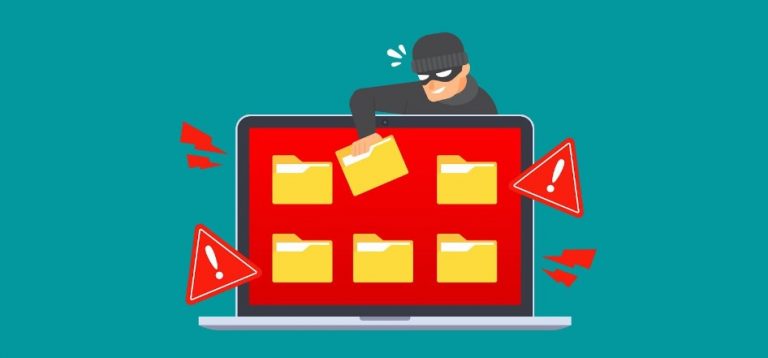
In the digital age, data breaches have become a term that, unfortunately, many of us are all too familiar with. From headlines featuring major corporations to emails notifying us of unauthorized access to our own data, the concept of a data breach has permeated the collective consciousness, raising concerns about privacy, security, and the integrity of our online presence.
Understanding what constitutes a data breach and its implications is crucial for both individuals and organizations navigating the complexities of the digital world. You can discover more relevant info here https://www.usatoday.com/story/money/2024/01/25/data-breach-id-theft-protection/72352690007/.
The Anatomy of a Data Breach

At its core, a data breach occurs when sensitive, protected, or confidential data is accessed, disclosed, or used without authorization. This can encompass a wide array of information, including personal identification details, financial records, health information, corporate secrets, and more.
The breach can be the result of a cyberattack by hackers using various methods such as malware, phishing, or exploiting security vulnerabilities. However, not all data breaches are born from malicious intent; they can also occur through human error, such as an employee inadvertently sharing sensitive information.
Data breaches vary in scale and impact, from small leaks affecting a handful of individuals to massive breaches compromising the data of millions. Regardless of size, the fallout can be significant, leading to financial losses, reputational damage, and legal consequences.
For individuals, a breach may result in identity theft, financial fraud, or personal privacy invasions. For organizations, the consequences can extend to financial penalties, loss of customer trust, and long-term damage to their brand. Read more here.
What Counts as a Data Breach?

Understanding what constitutes a data breach involves looking beyond unauthorized access to consider the nature of the data involved. It’s not just about someone gaining entry to a system; it’s about what they see, take, or use.
Unauthorized Access
The most straightforward example of a data breach is when an unauthorized party gains access to data they have no right to view or possess. This can happen through hacking, but also through more mundane means like a lost laptop or a misconfigured database that leaves information unprotected on the internet.
Unauthorized Disclosure
Sometimes, data is intentionally or unintentionally shared with parties who should not have it. This could be an email containing confidential information sent to the wrong recipient or a cloud storage folder mistakenly set to ‘public’.
Data Theft
The deliberate theft of data, whether through cyber-espionage, insider threats, or external hacks, is a clear breach. This often targets valuable data like intellectual property, personal identity information, or financial details.
Data Loss
A data breach doesn’t always mean data ends up in the wrong hands. Sometimes, it’s about data being lost or made inaccessible, such as through a ransomware attack that encrypts data, making it unrecoverable without a backup.
The Ripple Effects of a Data Breach
The immediate aftermath of a data breach often focuses on the quantifiable—how many records were accessed, the financial cost to address the breach, and so on. However, the ripple effects can extend far beyond these initial metrics.
For individuals, the violation of privacy and potential for identity theft can lead to long-term anxiety and a loss of trust in digital systems. For businesses, a breach can erode customer confidence and loyalty, impacting revenue and growth.
Moreover, data breaches can have broader societal implications, fueling debates about digital privacy, the responsibilities of organizations to protect consumer data, and the adequacy of existing regulatory frameworks to address the challenges posed by the digital economy.
The GDPR Data Breach Claim
You’ve probably heard about this claim before, but don’t understand what it can do or what it is. Don’t worry because we’ve got you covered!
A GDPR data breach compensation claim arises under the General Data Protection Regulation (GDPR), a framework established by the European Union to protect privacy and personal data for individuals within the EU and the European Economic Area (EEA).
The GDPR, which came into effect on May 25, 2018, has set a new benchmark for data protection laws globally, emphasizing the importance of securing personal information and granting individuals significant rights over their data.
Under the GDPR, a data breach is defined as a security incident leading to the accidental or unlawful destruction, loss, alteration, unauthorized disclosure of, or access to, personal data transmitted, stored, or otherwise processed. This broad definition covers a range of scenarios, from cyberattacks resulting in the theft of personal data to unintentional leaks due to human error.
People who are physically, financially, or socially harmed by a breach have the right to seek compensation. This includes losing control over their personal data, having their rights limited, being discriminated against, having their identity stolen, fraud, losing money, having their reputation hurt, losing the privacy of data that is protected by professional secrecy, or any other major economic or social disadvantage.
A GDPR data breach compensation claim is, therefore, a legal mechanism that allows individuals affected by a data breach to claim compensation for the damages they have suffered as a result of an organization’s failure to comply with GDPR requirements.
To make GDPR data breach claims, individuals typically need to prove that the breach occurred as a result of the organization’s non-compliance with GDPR regulations, and that the breach caused them harm.
The claim can be made against both “controllers” (those who determine the purposes and means of processing personal data) and “processors” (those who process personal data on behalf of the controller).
The amazing thing to know is that the GDPR has empowered individuals with greater control over their personal data, but it also places significant responsibilities on organizations that handle personal data.
These organizations are required to implement stringent data protection measures, report data breaches to the relevant authorities and affected individuals promptly (typically within 72 hours of becoming aware of the breach), and face substantial fines for non-compliance, in addition to potential compensation claims.
How Much of a Compensation Could You Receive?
The amount of compensation an affected person can receive for a data breach under GDPR or similar data protection laws depends on several factors. There’s no fixed amount or straightforward formula for determining compensation, as each case is assessed on its individual merits, taking into account the nature of the breach and the extent of the damage suffered by the individual.
Factors Influencing Compensation Amounts:
Nature and Severity of the Breach
The more sensitive the data involved in the breach, the higher the potential compensation. For instance, breaches involving financial information, health records, or other particularly sensitive data are likely to result in higher compensation amounts due to the severe impact on the affected individuals.
Extent of Damage or Harm
Compensation is largely dependent on the extent of damage, including emotional distress, loss of privacy, financial loss, and any costs incurred by the individual as a direct result of the breach. The more severe the consequences experienced by the individual, the higher the compensation might be.
Duration of the Impact
The length of time the individual is affected by the breach can also influence the compensation amount. Long-term impacts, such as ongoing identity theft issues or sustained psychological harm, may warrant higher compensation.
Negligence or Intent
The circumstances leading to the breach play a crucial role in determining compensation. Incidents where the organization demonstrated gross negligence or intentional disregard for data protection regulations might result in higher compensation amounts as a form of punitive measure.
Legal Precedents and Settlements
There have been various cases across the European Union where individuals received compensation for data breaches, with amounts ranging from symbolic sums for minor infringements to substantial settlements in cases of significant harm.
However, due to the relatively recent implementation of GDPR and the diversity of national legal systems within the EU, there is still a developing body of case law that will influence future compensation awards.
The post Breach of Data Protection – What to Understand? appeared first on Barnorama.






















0 Comments